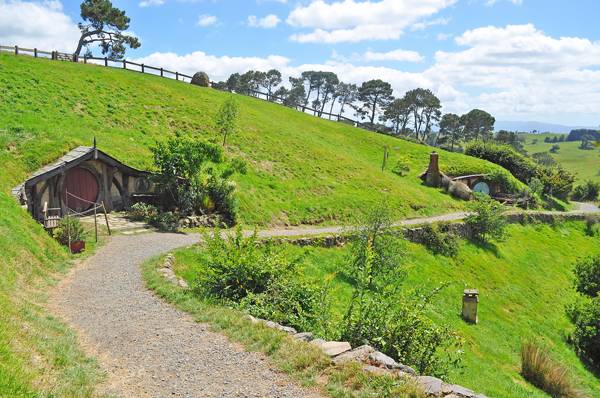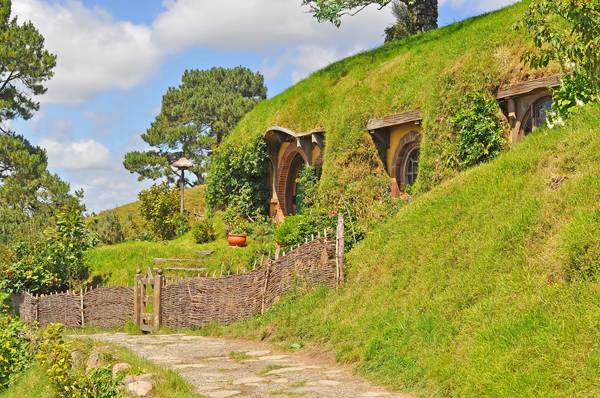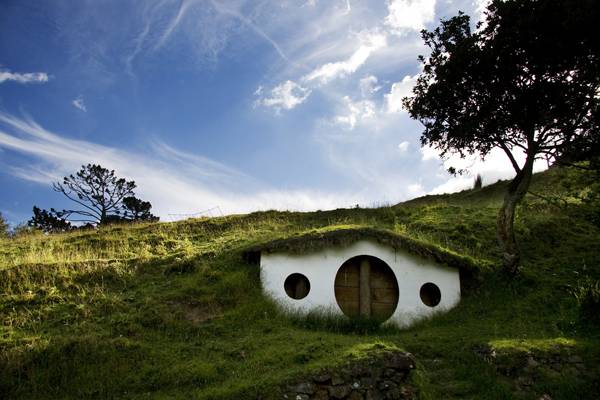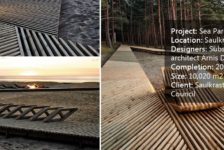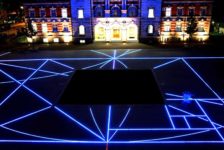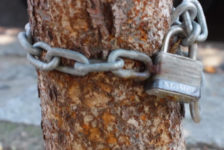People started out from living in rudimentary and natural shelters like caves or simple structures from wood and animal pelts. But with development, of skills and further knowledge, humans strived for more security and comfort in their homes. They slowly drew away from nature and towards artificial means of living. A massive change was made, brought along by industry and the growing needs for technology, one almost completely detached and opposed to nature, especially when we arrive in our age.
And yes, man has relished it: from the iron structures, to glass expanses and unnaturally white walls spreading through one’s house. It is a living style that disregards the environment. Today’s houses stand out in their surroundings rather that fitting nicely with the trees, hills and all of nature’s elements. And yes, we enjoyed it because it was another long chapter in our way of dwelling, but it seems that more and more people miss that mutual communion with nature.
J.R.R.Tolkien We have started to achieve this by taking inspiration from J.R.R. Tolkien, a man of great talent with a tremendous amount of respect, regard and consideration towards natural motifs which are heavily spread in his works. He has given us not only a beautiful story but a blueprint for the Hobbit house, a cosy, natural, simple and accessible way of life.
This creation of his may have been a prediction for what people may need a few decades after his time. And he was right. People are buying into it not only because they love the story but because it makes sense after all these years of the dramatic break from the unaltered environment. Personal versions of the Tolkien Hobbit house are popping up all over the world in man’s new endeavour to return to the natural once more.
People have started to use exclusively natural materials to build their homes from an artistic point of view and for the strive to integrate the construction into the landscape. One such starting point is the Cambridgeshire straw bale hexagon house built mainly by Kelly and Masoko Neville. And though the building sits on wooden stilts and dominates the site, in does so in the way that a hill or a rock would among some trees. This is due to its hexagon shape inspired by a bee’s honey comb and the outside aspect of earthy coloured lime walls and grey aged wood. A stream flowing by and a wooden bridge makes the house sit more comfortably in the site, even more so when it’s surrounded by a myriad of flowers and plants. It embodies the Tolkien idea of living in the midst of nature.
Being in the bosom of nature makes man feel content and at ease, and it is exactly this feeling that has been missing totally or to a certain degree from many people’s lives over the last hundred years. A step forward towards the original Hobbit house is an award winning stone cottage in Pennsylvania designed and built by some passionate architects. Blending into nature Surrounded by wood land and built mainly from stone, the cottage fades right into the landscape and it a successful natural jewel rather than an eye sore. Natural inspired curves and shapes in the exterior and interior of the construction make it that much more beautiful and serene. Though man’s print can be seen, it is a rather simple one that welcomes nature in as much as the landscape engulfs it to create a sculpted hybrid in which natural and artificial can cooperate to a better end. More and more people are returning to the roots, so to speak, by choosing to live in the country side and in nature-inspired and eco-friendly houses. The ultimate ecological and natural building was achieved by Simon Dale from Wales, where he built a genuine Hobbit house by his own. The materials used all came exclusively from the area and were use in a very eco-friendly method. Heavy use of wood, stone and earth has rendered it practically unrecognisable as a normal house. Though a sufficient and pleasing house it is according to its owner and other people as well. The building is almost completely covered with green earth which makes it sink into the hillside making the plot so much more beautiful. It has created and simple yet satisfying world for the family where they can life as sustainably and as closely to nature as they possibly can.These designs are increasingly more thoughtful towards the surrounding landscape. The houses become part of the environment rather than sitting on top of it and thus give a unique and natural environment to live in happily. It may begin an experience that probably most people are not familiar with but should be.
In some ways we have lost part of our humanity in our strive for technology and our self-exile from the predominantly natural world. This leaves us wondering ‘what if such an ecological and nature inspired house could help us discover a part that we have lost over hundreds of years of evolution?’ The truth is that man often finds happiness from the simplest of things. And for those who don’t agree, think of your ability to extract the most basic needs and feelings from complicated elements such as stories and paintings. We really have complicated our lives ourselves, so why not just try that older card for a change? The fact of the matter is that we truly cannot live healthily without natural elements surrounding us. Written by Oana Anghelache Featured image: bartuchna@yahoo.pl / shutterstock.com, modification by SDR
This article was originally submitted to Landscape Architects Network
Published in Blog


